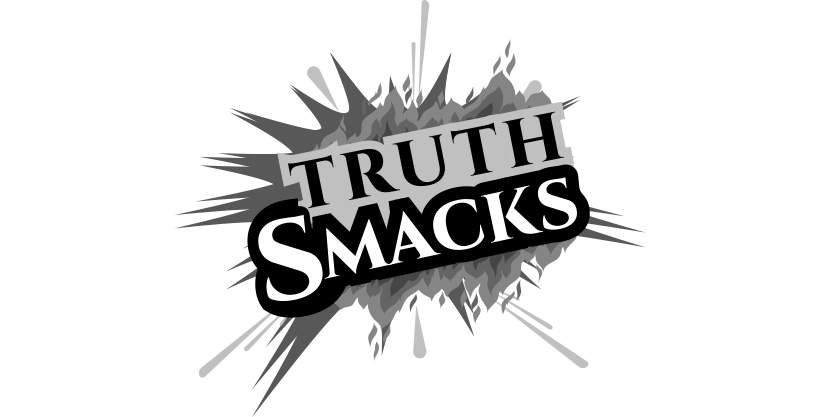Branding and the Journey from Idea to Identity
Branding is a multifaceted concept that extends beyond a company’s name or logo. It encompasses the entire image and perception associated with a business, product, or service. Successful branding has the power to influence consumer behavior, build trust, and create a strong emotional connection with the target audience. This process begins with a simple idea, a spark of inspiration, and evolves into a comprehensive brand identity that defines the business in the minds of consumers.
The Idea Generation Phase
At the heart of the branding process lies the initial idea or concept. This could be a unique product, service, or a vision that inspires the creation of a new business. It’s the seed from which the brand story will grow. In this phase, entrepreneurs and business leaders must focus on:
- Identifying the Core Idea: What is the central concept or vision behind the brand? It is essential to define this clearly as it will drive the entire brand development process.
- Market Gap Analysis: Evaluate the market to determine whether there is a gap or an opportunity that aligns with the idea. This stage is about assessing the viability and potential for the brand in the market.
- Unique Selling Proposition (USP): What sets the idea apart from existing businesses or competitors? A strong USP is crucial in the crowded business landscape.
Market Research and Analysis
Before delving deeper into brand development, thorough market research is a prerequisite. This stage involves gathering data and insights about the target audience, competition, industry trends, and consumer preferences. The objectives of this phase are:
- Understanding the Target Audience: To create a brand story that resonates, it’s essential to understand who the brand is trying to reach. What are their demographics, psychographics, and behaviors?
- Competitor Analysis: Identify key competitors in the market and assess their strengths, weaknesses, and positioning. This helps in finding a unique angle for the brand.
- Market Trends and Opportunities: Stay informed about industry trends and opportunities. This can inform the brand’s positioning and strategy.
- Consumer Preferences: What do consumers want, and how does the brand’s idea align with these preferences? This understanding is vital for tailoring the brand story.
Formulating a Comprehensive Brand Strategy
With the idea refined and market research completed, it’s time to develop a comprehensive brand strategy. This strategy is the blueprint for creating the brand’s identity. It includes elements such as:
- Mission and Vision: Clearly define the brand’s mission and vision. What does the brand aim to achieve, and what does it aspire to be in the long run?
- Brand Values: Establish the core values that the brand stands for. These values should be reflected in all aspects of the brand’s identity and messaging.
- Brand Positioning: Determine where the brand will fit in the market landscape. What is the unique space it occupies, and how will it resonate with the target audience?
- Brand Personality: Define the brand’s personality traits. Is it friendly, professional, innovative, or traditional? This personality should align with the audience’s preferences.
- Brand Promise: What can customers expect from the brand? The brand promise sets expectations and shapes the customer experience.
Crafting the Visual Identity
The visual identity is a critical component of the brand. It’s what consumers first see and remember about the brand. Creating a compelling visual identity involves designing elements such as:
- Logo: The logo is the most recognizable symbol of the brand. It should be simple, memorable, and reflect the brand’s personality and values.
- Color Palette: The choice of colors has a profound psychological impact on how the brand is perceived. The color palette should be consistent and meaningful.
- Typography: Typography sets the tone for written content. It should align with the brand’s personality and be easy to read.
- Visual Style: Develop a consistent visual style for images, graphics, and other design elements used in marketing materials.
Messaging and Communication
Creating a brand story is about developing compelling messages and narratives that convey the brand’s unique value proposition. Effective messaging includes:
- Key Messages: Identify key messages that resonate with the target audience and communicate the brand’s benefits and values.
- Brand Story: Craft a brand story that explains the brand’s journey, mission, and how it can make a difference in the lives of its customers.
- Tagline: A memorable tagline can encapsulate the brand’s essence and stick in the minds of consumers.
- Content Strategy: Develop a content plan that aligns with the brand’s goals. This may include blog posts, social media content, and marketing materials.
- Tone and Voice: Determine the brand’s tone and voice in written and spoken communication. Is it friendly, authoritative, or casual?
Online and Offline Presence
A brand’s presence should be established both online and offline. This includes:
- Website Development: Create a website that reflects the brand’s identity, provides information, and facilitates interactions with customers.
- Social Media Profiles: Establish and maintain active social media profiles on platforms relevant to the target audience.
- Business Cards and Marketing Materials: Develop business cards, brochures, and other materials that showcase the brand’s identity.
- Visual Consistency: Ensure that all online and offline materials maintain a consistent visual identity and messaging.
Customer Engagement and Interaction
Engaging with customers and the community is essential for brand building. This involves:
- Customer Service: Provide excellent customer service by addressing inquiries, concerns, and feedback promptly and professionally.
- Community Involvement: Participate in community events, engage with customers on social media, and actively seek feedback.
- Loyalty Programs: Implement loyalty programs or incentives to reward and retain loyal customers.
Monitoring and Evolution
Branding is an ongoing process. Regular monitoring and adaptation are necessary to ensure the brand’s relevance and success. This involves:
- Measurement and Analytics: Use metrics and analytics to track the effectiveness of branding efforts. Analyze data to make informed decisions.
- Feedback and Improvements: Continuously gather feedback from customers and stakeholders and use it to make improvements to the brand strategy.
- Adaptation: Be prepared to adapt the brand strategy as the business grows and market conditions change.
- Crisis Management: Develop a crisis management plan to handle and manage brand crises effectively, preserving the brand’s reputation.
Employee Branding
Employees are often the face of the brand, and they play a crucial role in conveying the brand’s values and personality. Employee branding involves:
- Training: Provide training and guidelines to employees so that they understand and embody the brand’s values.
- Employee Engagement: Engage employees in the brand’s mission and vision, making them brand ambassadors in their interactions with customers.
Legal and Ethical Considerations
Ensure that all branding efforts comply with legal and ethical standards, including trademark and copyright considerations. Protect the brand’s intellectual property and ensure that all content is in compliance with relevant laws and regulations.
The Power of Branding
The journey from idea to identity is a transformative process that empowers businesses to create a strong and enduring brand. It is a process that begins with a spark of inspiration and culminates in the establishment of a brand that captures the hearts and minds of its target audience.
The power of branding lies in its ability to influence consumer behavior, foster trust and loyalty, and create a lasting connection with the audience. It is a journey that requires careful planning, creativity, and consistency. It is a process of storytelling that goes beyond words and images to encompass a brand’s personality, values, and the promise it makes to its customers.
In the ever-evolving business landscape, branding is not a one-time event; it is a continuous journey of adaptation and growth. A strong brand strategist understands the importance of staying attuned to market changes, seeking feedback, and making data-driven decisions. In doing so, they can ensure that the brand story remains relevant and compelling, standing the test of time.
“From Idea to Identity: Let’s Create Your Brand Story” is more than a concept; it is a roadmap for businesses and organizations looking to make their mark in the world. It is a reminder that every great brand, from global giants to local businesses, started with an idea and a vision. Through careful planning, thoughtful execution, and a commitment to authenticity, any brand can find its unique identity and thrive in a competitive market.
This comprehensive exploration of the branding process highlights the intricacies and strategies involved in turning a concept into a fully realized brand identity. Whether you’re a business owner looking to establish a brand or a marketing professional seeking to refine an existing one, the journey from idea to identity provides invaluable insights and a roadmap for success.












